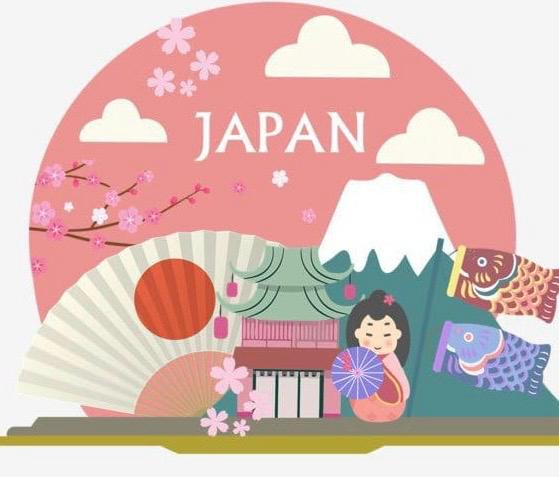Japanese Proficiency: Intro Handbook
Learning Japanese can be an enriching and rewarding experience, opening doors to a rich cultural heritage and a fascinating language. In this guide, we’ll take you step by step through the essentials of starting your language learning journey. From understanding the basic structure to learning your very first phrases, you’ll find everything you need to begin your adventure with confidence. Ready to dive in? Let’s get started! The Significance of Mastering Japanese Consistency is a cornerstone of language acquisition, particularly when learning Japanese. Unlike languages similar to English, Japanese presents unique challenges in grammar, vocabulary, and script. Therefore, regular practice is essential for progress. Cultural Significance The knowledge of Japanese allows you to directly engage with Japan’s extensive cultural treasures—from time-honored literature and classical arts to modern manga, anime, and cinema. Understanding the language enables deeper appreciation and enjoyment of these forms, as many nuances are lost in translation. Furthermore, learning Japanese fosters deeper interpersonal relationships and understanding through improved communication with native speakers, enhancing experiences like travel, dining, and partnerships. Economic Opportunities As the third-largest economy in the world, Japan holds significant sway in the fields of technology, sciences, and international trade. Moreover, knowing Japanese not only enhances your resume but also positions you as a valuable asset to multinational companies engaged in Japanese markets. Additionally, with the increase in tourism and upcoming global events in Japan, there are abundant opportunities for entrepreneurs and service providers who can navigate both the language and the culture. Embarking on Japanese Mastery Embarking on the journey to learn Japanese can seem daunting due to its complex writing system and pronunciation. However, starting with some basic phrases and understanding the alphabets can make the process smoother. Basic Japanese Phrases Begin with simple yet essential phrases to help navigate daily interactions. Here are a few to start: – Hello: こんにちは (Konnichiwa) – Thank you: ありがとう (Arigatou) – Yes: はい (Hai) – No: いいえ (Iie) – Excuse me / I’m sorry: すみません (Sumimasen) – Goodbye: さようなら (Sayounara) Mastering these phrases will provide a foundation on which to build more complex language skills. Introduction to Hiragana and Katakana The Japanese writing system includes three types: Kanji, Hiragana, and Katakana. Beginners should start with Hiragana and Katakana, which are phonetic and cover every sound in the Japanese language. Hiragana is used for traditional Japanese words, while Katakana is used for foreign-derived words. Learning these scripts can be made fun and easy through the use of charts, flashcards, and writing practice. Useful Language Learning Apps Technology can be a powerful tool in language learning. Here are some apps that help make learning Japanese engaging and effective: – Duolingo – Offers daily lessons on vocabulary and grammar structured in a game-like format which makes learning less daunting. – Tandem – Connect with native Japanese speakers to practice speaking and improve your language skills in a real-world context. – Anki – A flashcard app that helps with memorization of Hiragana, Katakana, Kanji, and vocabulary through spaced repetition technique. By utilizing these resources, you can slowly but steadily pave your way towards fluency in Japanese, making your learning journey enjoyable and fruitful. Essential Grammar Points Sentence Structure Japanese sentence structure can initially seem daunting due to its Subject-Object-Verb (SOV) order, which is a sharp contrast to the Subject-Verb-Object (SVO) order used in English. In Japanese, the verb always comes at the end of the sentence. For instance, the English sentence “I eat sushi” would be structured as “I sushi eat” in Japanese (私は寿司を食べる, Watashi wa sushi o taberu). Once you grasp this pattern, forming basic sentences becomes systematically easier. Remember, particles like wa (は), ga (が), and o (を) are crucial as they respectively mark the subject, the identifier, and the direct object, helping to navigate the sentence structure smoothly. Verb Conjugation Verbs in Japanese are divided primarily into three groups based on their dictionary form endings: -ru, -u, and -iru/eru. Mastering verb conjugation involves understanding how these verbs behave in different tenses. For beginners, focus on present and past tenses, which will cover most daily communication needs. For example, the verb “to eat” (taberu) becomes “ate” (tabeta) in the past tense. Regular practice with verb conjugations will help solidify your understanding and usage of Japanese verbs in various contexts. Noun and Adjective Usage Nouns in Japanese do not have a grammatical gender or number, which simplifies things considerably. However, adjectives can be a bit trickier. They are divided into two types: “i-adjectives” and “na-adjectives,” depending on how they conjugate. For instance, “big” (大きい, ookii) is an i-adjective and changes form based on tense (“big” –> “was big”, 大きかった, ookikatta). Na-adjectives, like “quiet” (静か, shizuka), require a na (な) when used descriptively with a noun (e.g., 静かな場所, shizuka na basho, a quiet place). Recognize the adjective type to use them correctly in sentences. Building Vocabulary Common Words and Expressions Expanding your vocabulary is crucial to becoming fluent. Start with frequently used words and expressions that are essential for everyday communication. Examples include greetings like “hello” (こんにちは, konnichiwa), “thank you” (ありがとうございます, arigatou gozaimasu), and basic verbs like “go” (行く, iku), “come” (来る, kuru), and “do” (する, suru). Also, learn numbers, days of the week, and simple question words like “what” (何, nani), “where” (どこ, doko), and “why” (なぜ, naze). Tips for Memorization Building a large vocabulary requires effective memorization techniques: – Use flashcards or apps like Anki to regularly review words and phrases. – Incorporate new vocabulary into sentences to understand context and usage. – Practice with native speakers or through language exchange platforms to reinforce learning. – Routinely set small, achievable goals to keep your learning process motivated and manageable. For example, aim to learn 10 new words a day and use them in sentences. By focusing on essential grammar and progressively building your vocabulary, you will start feeling more confident in your Japanese language skills. Remember, consistency is key, so make your learning process a part of your daily routine. Practicing Japanese Learning a new language is an exciting


